Search Articles
3 Best Fielding Drills with Small Baseballs
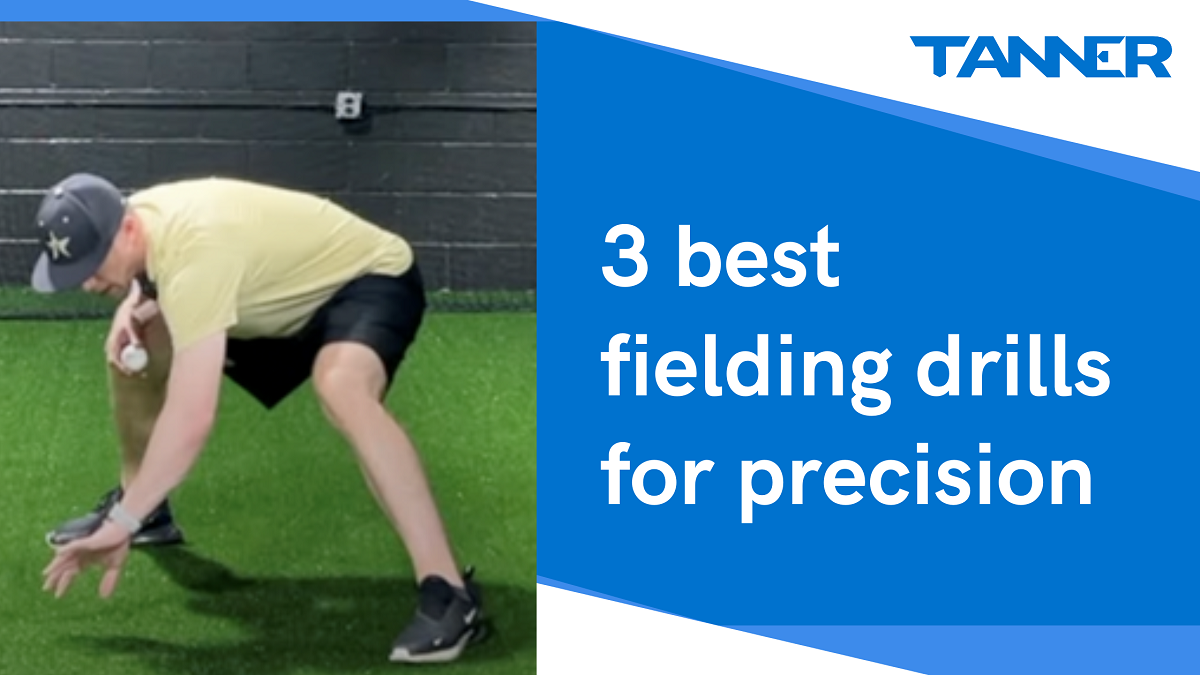
Est. Reading:
13 min
Updated: September 27, 2023
Article Contents
Developing better hand-eye coordination and precision in fielding takes practice and we love these softball and baseball fielding drills with small baseballs / mini baseballs that you can do on your own.
(Interested in hitting drills for precision? Check out our other post on hand-eye coordination drills.)
Sometimes, you don’t have a partner available which is especially difficult because infielders need a lot of repetition to get their glovework dialed in.
The good news? None of these drills require a partner to help you get your defensive work in!
In this video, Matt Antonelli who played with the Padres, Nationals, Orioles, Yankees, and Indians, shares 3 creative small baseball fielding drills to get your fielding work in.
First things first… Just remember, there are no magic drills. We need to focus on practicing the right fielding mechanics. Below we have outlined the 3 drills Matt Antonelli covers in his video.
Video Transcript
Hey, what's going on guys? So today we're talking about some creative ways to get your fielding work in. I have so many questions from people that say, you know, how can I do fielding drills? What fielding drills can I do on my own? I don't have someone to hit me ground balls. How do I get better by myself when it comes to defense? So I'm going to show you a couple of super simple drills that you can do. And not just the drills, but making sure that we're focusing on the proper things during those drills. There are no really magic drills, right? We have to make sure that we're focusing on the right mechanics. We have to do it so many times in practice that in the game, it becomes autopilot. Our body goes into autopilot, and we just do everything perfectly, the exact way that we want it to happen. The only way that you get there is through repetition and practice.
Okay, let's talk about a couple of tools that we use for this. Let me show you a couple of drills and then let me give you a couple of pointers. So the first thing is that you do not need someone else to help you with your defensive work. If you have someone that hits you a ball, then that's terrific. But don't let that be the reason or let don't let not having someone hit you balls be the reason that you don't get your defensive work in. Okay, so I'm going to show you a couple of drills you can do without anything. I'm going to show you a couple of drills that you can do with a ball and a wall.
Now, for today, what I'm using is this Tanner training ball. And this thing is actually one of my favorite things now. I'll show it to you real quick. It's a really, really small training baseball. Right? So we can use this for hitting as well. But for today, I'm using it for fielding. We talk a lot when it comes to fielding about aiming small and missing small and being really, really tuned into exactly where the ball is going in your glove. I'm actually also using this Valley Trainer, this really small glove as well.
But we talk a lot about getting this ball in the exact same position in your glove every single time. Right off the index finger. If you watch really good infielders, that ball goes in the glove at the same spot every single time, right off the index finger. If you watch bad infielders, well, the really bad ones miss the ball, but the ones that are just okay, they catch the ball all over the place. And when you catch the ball all over the place, when you get one ball here and one ball here and one ball here and one ball here, you don't get that consistent exchange. And so I'm always working on getting the ball right off my index finger. When you train with the small training ball from Tanner, it forces you to catch the ball right here. It forces you to focus, right? This is a lot harder to field than a normal baseball. And you use this for a while, and then you go back to a normal baseball, and it feels like you're fielding beach balls. That's why I love it. It forces the fielder to have really, really laser-like focus.
Okay, now with all of that being said, let's talk about some easy drills that you can do. The first one, we take our glove off. You can use a glove if you want with it, but we're going to take our glove off for right now. And we're just going to drop the ball and feel that. Okay, now you can do this with backhands. You can do this with forehands. It doesn't matter. But again, the small ball really makes us fine-tune our focus. Let's start with backhands, okay? So we talk all the time about getting short hops, right? We're trying to get short hops and we're trying to get long hops. We're trying to stay away from in-between hops. On the short hop, if we're going to get a ball that we have to create a short hop with, we have to use our feet and we have to use our glove in a positive action on that in-between hop to create that short hop. And so we're going to work on that right now.
And so all I do is I get into a fielding position, right? So we're going to talk about backhands right now. We're going to get low. I'm going to have a flat back. I'm going to try to get my eyes behind my glove, even though I don't have a glove on right now. And we're just going to drop the ball, and we're going to work through it. So we're going to be positive, or I call it pinching the short hop, right? Or pinching the ball to create that short hop. And so we're right here, and we're going to pinch. Pinch. Pinch. So you can start off by doing that. Then we can work on the transfer. So not only are you going to pinch through it, but then you're going to bring it back and transfer, right? So pinch through it, bring it back, transfer.
Then we can add in the footwork, right? So then we go here, there. Right? So now we're working on the glove work, we're working on the transfer, we're working on the footwork. We've just done everything really that there is to feel the ball. And we can do thousands of reps. You can sit in your house all day long and do this. You don't need a turf field. We're fortunate here; I got a nice turf field here. You don't need a turf field. You can use anything. You can use your bedroom carpet. It doesn't matter, okay? So you go backhands, you turn your body, and you can do forehands, right? We can do balls right at us. You can go two hands; you can go one hand. Right? So we're working on our glove work, we're working on our transfers, and we're working on our footwork.
And if you want to, again, if you're in a... obviously, if you're in your bedroom, you're probably not going to want to throw it. But you can add in a throw as well, right? So if I wanted to, I could get down. I could go here, pick it, transfer, and throw. Right? So I'm able to get in all aspects of fielding, and I'm here all by myself. So that's the first really easy drill to do using the Tanner training small training ball.
Now, the other thing, and this is the biggest thing for me, is just having a ball and a wall, right? So I don't have a wall with me right here. We're going to go right down to the wall over here. If you can find a ball and a wall, that should be your best friend. All the best fielders that I've played with, I've seen them bouncing balls off walls, fielding them, and working on the details, right? Almost every clubhouse I've ever been in, especially in spring training early in the year, you would always see players finding someplace, bouncing balls off the wall, and fielding it. So let's transition over here real quick. I'm going to bring the camera over. I'm going to grab a wall. I'm going to show you how simple it can be to work on everything that you need to as far as fielding goes.
Okay, so now we've just transitioned over to our wall here. Now, you can get as creative as you want with this. You can do a hands routine. We have other videos online of our hands routine. Our hands routines are basically working on balls at us, to our forehand and to our backhand. You can go no glove on; you can go glove on. I'll show you very quickly. All you need again is a wall. We'll typically start down on our knees, and all we're going to do is throw the ball off the wall and feel the ball. Right? Super simple. You can do balls at you; you can do backhands, and you can do forehands. All I'm thinking about when I'm doing that is bringing the ball to the center of my body. Right? First, let's back up a second. Fielding the ball off the same point of the glove every time, right off the index finger, bringing the ball to the center of my body, having good posture, having my chest over. Right? So I don't want to be here; I want to be chest over, hands out front, always be able to see the ball and my glove at the same view. Right here. Right? And so then I'm feeling the ball, I'm bringing the ball to the middle of my body, with my elbows going out.
I can go here, then I can work my transfers, okay? And again, do it ball at you, forehand, backhand. From there, you can stand up, and you can do the same thing, but you're standing. And so now I'm just throwing the ball off the wall and feeling the ball, and I'm bringing it to the middle of my body. I do forehands; I do backhands; I do balls right at me. Right? Then we can add in our footwork. I throw the ball off the wall, I feel that, I bring the ball here, I add in my footwork. On my footwork, I'm taking my right foot to my left and my left to the top to my target. Okay, so then you can just keep pushing back, and you can throw the ball, and then you can work your footwork, right? Get to the right of the ball, work through the ball. I would show you all that, but I don't have enough room. I think I'll be out of the camera. We have other videos on it. But here's the bottom line. The bottom line is there's no excuses for not getting your fielding in. All you need is a ball and a wall, and you don't even need a wall, as I showed you before, okay? So, no excuses to be a better fielder.
When you're practicing, work on the fine, small details, right? Again, something as easy as catching the ball off your index finger every time, using a small training ball to really, really focus on the small details. But every rep has to be perfect. That's the biggest message. Every rep has to be perfect. If your reps aren't perfect in practice, they'll never be perfect in the game. Too many fielders think they're just going to go in the game, and it's just going to magically happen. No, you have to make it perfect in practice, right? Everything has to be exactly the way you want it, because that's the only way to transition over to the game. And when you get in the game, the ultimate goal is to play on autopilot. And all I mean by that is you don't have to think. You're not going, "Okay, here comes the ball, get to the right of the ball, okay, go right, left, field, bring the ball in the middle, right, left, throw right." You're not doing that. But you have to do it thousands of times in practice for it to happen in the game, right? If you get in the game, and you have to think all that, no chance. Right? You won't be a good fielder. But you should be thinking about that in practice. That's the key.
Okay, so hopefully that helped you out. Again, I know these small training balls have really helped our fielders and our hitters. But I really like it for fielding as well. Like I said, you get all of a sudden you start hitting regular balls get hit at you, and everything just feels so much easier because you have to be super focused when you're using the really, really small balls by Tanner. So that's all I have. Let me know if you have any questions in the comment section below. Subscribe to the channel, hit the notification, give a thumbs up, all that good stuff. We'll talk to you later. If you've got hitters that you're looking to improve before the start of next season, this is essential for you. Matt Antonelli here, former Major League player, first-round pick, and college coach.
With this course, we're going to show you exactly, step by step, how to generate power, develop bat speed, and enhance swing mechanics regardless of your hitter's age. This course is going to deliver advanced hitting techniques that will allow any hitter to get better and make an impact at the plate this spring. We have a full catalog of training content that you can access from anywhere at any time. This course is perfect for players, parents, coaches, instructors, and more. It offers a comprehensive package of drills and techniques that you can directly implement. Our course has helped hitters all over the country at different competition levels, and the feedback that we've received has been outstanding. The work you put in now will drive your success at the plate this spring. Get the essential knowledge that you need to take your game to the next level."
Precision Matters - Aim Small, Miss Small
If you watch really good infielders, you’ll notice they are very consistent in fielding the same ball the same way. By “same ball” we mean the same type of ball… routine grounder, backhand, etc.
Bad infielders will be fielding that ball a hundred different ways. It’s different every time. And that leads to a lot of inconsistency and mistakes in your fielding.
That’s why in this video, Antonelli recommends using this smaller-than-average baseball (small baseballs / mini baseballs) for the drills. He puts it this way:
"It forces you to focus. This is a lot harder to field than a normal baseball. You field this for a little while, and then you go back to a regular baseball, and it feels like you're fielding beachballs."
“Aim small, miss small”
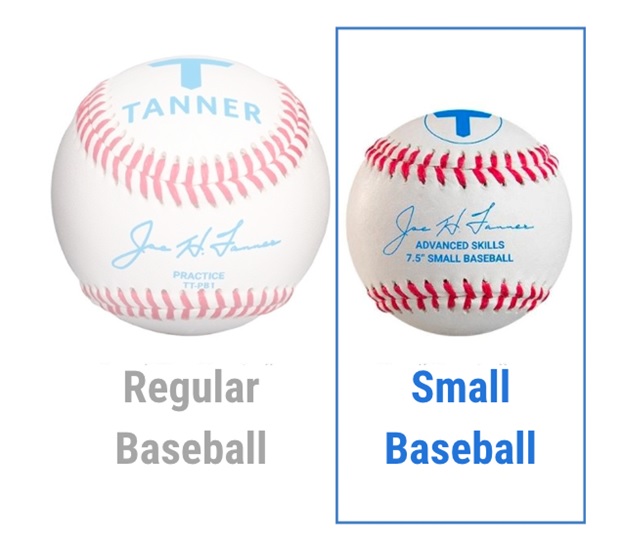
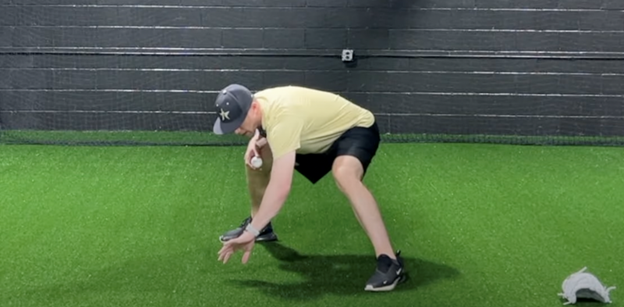
Drill #1 - Backhand Pinchers
The beautiful thing about this fielding drill is that you’re working almost everything you need to field a baseball and you don’t need a partner, field, bounceback net, or even a wall! You can literally do this drill ANYWHERE.
Equipment for this drill
- Glove
- Small baseballs
How to do this fielding drill (without a partner)
- Get low
- Flat back
- Drop the ball
- “Pinch” the short hop
- After you’re comfortable with steps 1 - 4, add the transfer
- After you’re comfortable with steps 1 - 5, add footwork
- Optional - Add in a throw
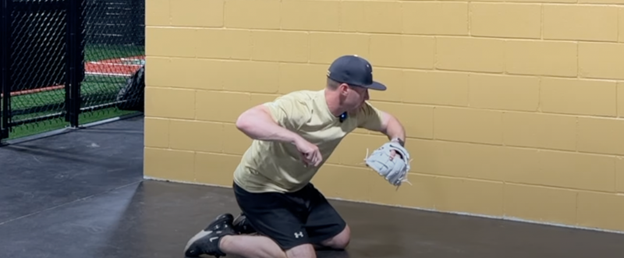
Drill #2 - Wall Ball, On Knees
If you’re an infielder, the wall should be your best friend. The best infielders know how to strategically get in reps…
- Without taxing their bodies too much
- Without needing a lot of space
- Without needing a partner
Equipment for this drill
- Glove
- Small baseballs
- Wall
How to do this fielding drill
- Get on your knees
- Bounce the ball off the wall so it lands in front of you and field the short hop
- Be sure to do balls straight at you, forehand and backhand
- When you’re ready, add in the transfer
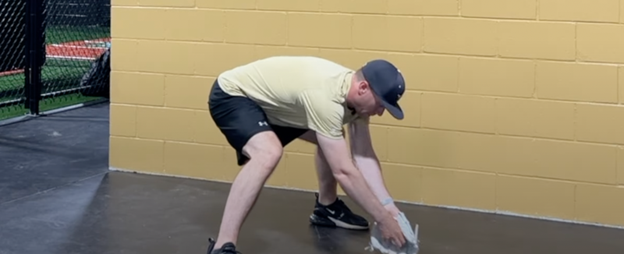
Drill #3 - Wall Ball, Standing
Equipment for this drill
- Glove
- Small baseballs
- Wall
How to do this fielding drill
- Start on your feet, facing the wall in your fielding stance
- Bounce the ball off the wall so it lands in front of you and field the short hop
- Be sure to do balls straight at you, forehand and backhand
- After you’re comfortable with steps 1 - 4, add the transfer
- After you’re comfortable with steps 1 - 5, add footwork
- Optional - Add in a throw
- To make it more challenging back up and field short and long hops
So there you go. 3 small baseball fielding drills that you can easily do without a partner.
Important Reminder from this Former Major Leaguer
“Every rep has to be perfect. That’s the biggest message. Every rep has to be perfect. If it’s not perfect in practice, it won’t be perfect in the game.”
Too many fielders think it’s going to “magically” be perfect in the game… but it doesn't work that way! You have to field perfectly thousands of times in practice for it to happen automatically, on “auto-pilot” in the game.
That’s why I love these small baseballs from Tanner Tees.
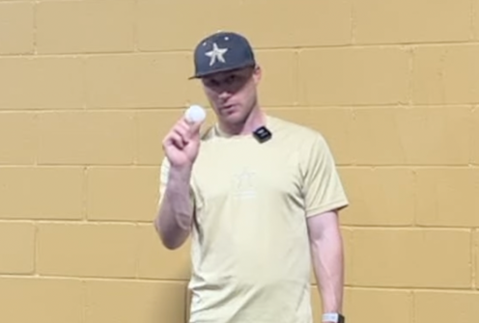
These small training balls have really helped our fielders - and our hitters - but I really like them for fielding.
You use these and then start getting regular baseballs hit at you, it’ll feel easy, because with these you have to be SUPER focused.


